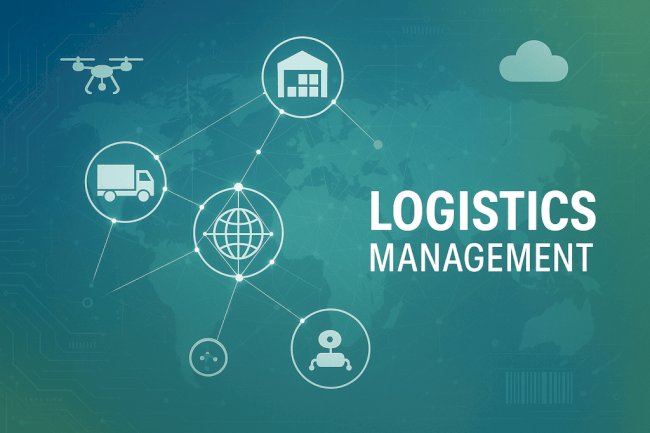How to Choose the Right Tech Stack for Your Web App

We’ve been around the web app block more times than we can count (seriously, we stopped counting after project number 178). And if there’s one recurring debate that turns even the calmest project manager into a caffeine-fueled philosopher, it’s this: Which tech stack should we use?
At Kanhasoft, a Web Application Development Company that's knee-deep in custom software development projects daily, we’ve seen both sides of the tech stack coin—glorious wins and hair-pulling chaos. So, let’s dive in—without drowning in jargon—and break down how to choose the right tech stack for your web app.
1. First Things First: What is a Tech Stack Anyway?
Before we run, let’s learn to jog—without tripping over JavaScript.
A tech stack is the combination of technologies used to build and run your web application. It includes:
-
Front-end: The user-facing part (hello, HTML, CSS, JavaScript—and their flashy cousins React, Angular, Vue).
-
Back-end: The behind-the-scenes logic and database operations (think Node.js, Python, Ruby, PHP).
-
Database: Where all your glorious app data lives (MySQL, MongoDB, PostgreSQL).
-
DevOps/Infrastructure: How your app gets deployed, hosted, and scaled (Docker, AWS, Jenkins, Kubernetes—aka the cool kids of the cloud).
2. Define Your App’s Purpose (Before You Marry the Stack)
If your app idea is still floating in your brain like a daydream from a startup founder's TED Talk, don’t pick a stack yet.
-
Are you building a real-time chat app? You’ll want WebSockets and something like Node.js.
-
Need to build a data-heavy dashboard? Consider Python with Django or Flask for its data-handling magic.
-
Launching an e-commerce platform? Laravel + Vue or MERN might be your dynamic duo.
Pro tip from experience: We once had a client who wanted to build a food delivery app with a tech stack suited for static blogging. Let’s just say... nobody got their biryani on time.
3. Scalability Is Not a Buzzword (It's a Lifesaver)
Your app might start small, like a humble roadside tea stall—but what if it goes viral?
Choose a tech stack that supports scaling horizontally and vertically. Frameworks like Node.js, .NET Core, and Django are designed to handle load increases without screaming for help.
At Kanhasoft, we've seen apps go from 100 users to 100,000 in weeks. One minute you're the neighborhood secret, next minute—Shark Tank is calling. Be ready.
4. Team Expertise Matters (A Lot More Than Buzzwords)
We get it—everyone wants the shiny new thing. But if your team’s a PHP pro, don’t force them to switch to Rust just because a Reddit thread said so.
Build with what your dev team knows well (or what your chosen Web Application Development Company excels in). Familiarity = speed + fewer bugs + fewer midnight panic calls.
Plus, your tech stack shouldn’t just look good on a CV—it should work.
5. Community and Ecosystem (Because Even Tech Needs Friends)
We once tried building a client’s app with a rare, under-documented JavaScript framework. It had all the bells, whistles... and zero community support. We were stuck on one error for two days. Two. Whole. Days.
Lesson? Choose tools that are well-documented and have large communities. If Stack Overflow doesn’t know the answer, you’re on your own in the wild.
Popular choices like React, Laravel, and Python have massive ecosystems—plugins, tutorials, Stack Overflow threads, memes—you name it.
6. Security Shouldn’t Be an Afterthought (Unless You Like Lawsuits)
Pick stacks known for built-in security features. For example, Django comes with many security settings out-of-the-box. Likewise, Laravel handles authentication and CSRF tokens like a champ.
Custom software development should never come at the cost of user data. In 2025, one breach is all it takes to tank your app—and your reputation.
7. Time to Market vs. Long-Term Flexibility (The Eternal Tug-of-War)
Some stacks let you go live yesterday (hello, low-code platforms), while others take time but are better for complex customization (we see you, .NET).
So here’s the deal—ask yourself:
“Do I need an MVP fast to test the market, or am I building the next Airbnb?”
That decision alone could make or break your tech stack choice.
8. Maintenance and Updates (Because Code Ages Like Milk)
Every stack needs maintenance. But some require a full army (we’re looking at you, legacy Java projects), while others are more “set it and check occasionally.”
Choose a stack with regular updates, active support, and easy upgrade paths. Future-you (and your budget) will thank you.
9. Cost Considerations (Your CFO Will Want a Word)
Open-source vs. licensed tools. Hosting requirements. Developer salaries (yes, hiring a Go developer may cost more than your backend). All of it matters.
The tech stack you pick affects your total project cost. Forever.
We once helped a startup switch from an overly complex microservices stack to a lean monolith—and reduced their server costs by 60%. Lean is sexy. And cheaper.
Final Thoughts: There Is No Perfect Stack (Just the Right One for You)
Choosing a tech stack isn’t about trends—it’s about aligning your business goals, team skills, and app needs. What works for Instagram won’t necessarily work for your home service booking app.
As a seasoned Web Application Development Company, we help clients choose (and stick to) the right tech stack that balances speed, scalability, and sanity.
Because at the end of the day, no one wants to maintain a Frankenstein stack that’s 40% deprecated and 60% duct tape.
FAQs
Q1: What is a tech stack in web application development?
A tech stack is a combination of programming languages, frameworks, libraries, and tools used to build a web application, including front-end, back-end, and databases.
Q2: How do I choose the right tech stack for my custom software development project?
Start with your app’s functionality, scalability needs, team expertise, and budget. Prioritize technologies with strong community support and good documentation.
Q3: Can I switch my tech stack later?
Technically yes, but it’s expensive and risky. It’s better to choose wisely at the start with help from an experienced Web Application Development Company.
Q4: What tech stacks are popular in 2025?
Some trending stacks in 2025 include MERN (MongoDB, Express, React, Node), Django + React, Laravel + Vue, and .NET Core + Angular.
Q5: Is open-source always better than licensed tech?
Not always. Open-source tools are great for flexibility and community support, but licensed tech often comes with enterprise-grade support and security features.
What's Your Reaction?














